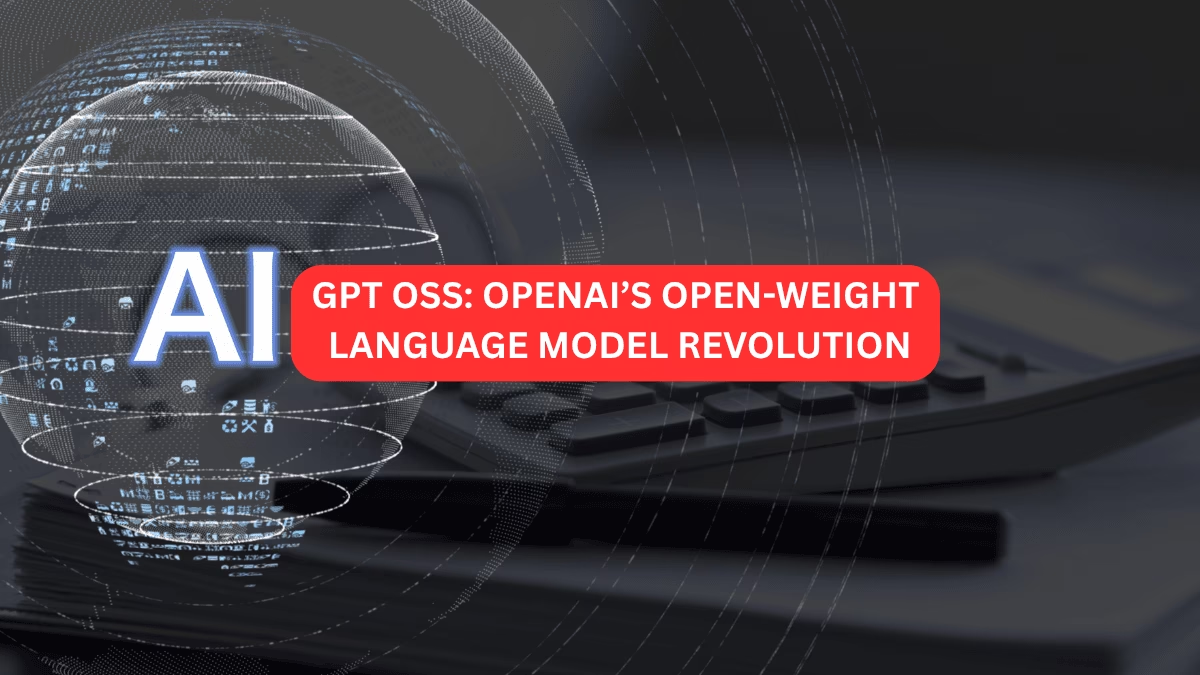The debut of GPT OSS by OpenAI has sent waves through the AI and technology world. As someone who has watched the shift from tightly guarded proprietary models to the open-source renaissance, the release of GPT OSS truly feels like a pivotal moment—not just for AI researchers and developers, but for businesses, hobbyists, and society at large. Here’s an in-depth look at GPT OSS: what it is, why it matters, what you can do with it, and my take on this transformative leap.
What is GPT OSS?
GPT OSS stands for “Generative Pretrained Transformer – Open Source Software.” It’s OpenAI’s brand-new family of open-weight, production-grade large language models (LLMs), made available under the permissive Apache 2.0 license. This dramatic change means anyone—individuals, startups, researchers, or big enterprises—can download, inspect, modify, fine-tune, and deploy the models freely, even for commercial purposes.
The GPT OSS lineup features two models:
- gpt-oss-120b: A 117 billion parameter model (“120b”) for high-reasoning tasks, able to run on a single Nvidia H100 GPU (or multi-GPU configs in the cloud).
- gpt-oss-20b: A 21 billion parameter model, highly efficient, designed for consumer devices with at least 16GB of RAM.
Both use a “Mixture-of-Experts” (MoE) architecture and 4-bit quantization (MXFP4), allowing fast inference and lower hardware requirements.
Key Features and Capabilities
- Open Weights: Unlike closed models, every parameter is accessible, giving full transparency. This invites community scrutiny, customization, and innovation.
- Chain-of-Thought Reasoning: GPT OSS supports logical, multi-step thinking (“chain-of-thought”) for complex problem solving, coding, advanced math, and tool-based workflows.
- Agentic Tasks: Native support for tool use (code execution, web search), agent workflows, and structured outputs—ideal for building intelligent digital assistants and autonomous agents.
- Flexible Reasoning Modes: Users can choose low, medium, or high “reasoning effort,” trading off latency for depth as needed.
- Fine-Tuning and Customization: Both models are easily fine-tunable, enabling adaptation for specialized datasets, business domains, or safety requirements.
- Huge Context Window: A 128,000-token context window means the models can process and understand very long documents or extensive conversations.
Why GPT OSS is Game-Changing
1. Real Openness from OpenAI
For years, OpenAI’s strongest models have been proprietary—available only via API. GPT OSS is the first open-weight model from OpenAI since GPT-2 (over six years ago), marking a return to open science at a moment of intense competition from Meta’s Llama, Mistral, DeepSeek, and others. Now, developers aren’t just using AI—they can shape it.
2. Productivity and Innovation for All
With the open Apache 2.0 license, anyone can use GPT OSS for private, local deployments, proprietary business tools, research, experimentation, or even to build competing products. The smaller model runs comfortably on modern laptops, supporting democratized access.
3. Safety and Responsibility
Releasing open-weight models means the community now shares responsibility for safeguards and ethical use. Developers must implement their own system-level protections to match the robust guardrails of cloud APIs, a shift that encourages broader, more creative, but also more careful, experimentation.
ALSO READ : All About Google Genie 3: The Ultimate Guide to DeepMind’s Next-Gen World Model
My Perspective on GPT OSS
Having followed the journey of language models closely, I see GPT OSS as more than just another LLM release. It’s a statement about AI’s future:
- Empowerment: By putting powerful tools directly in users’ hands, GPT OSS will unleash a wave of creativity, localized solutions, and transparency in how AI works.
- Responsibility: With this empowerment comes a greater need for security, monitoring, and ethical design—an open model is only as trustworthy as those who deploy it.
- Collaboration: This move fosters deeper collaboration between industry giants, researchers, and open-source communities. The days of “walled garden” AI look numbered; open models foster new partnerships and rapid progress in safety, performance, and accessibility.
What Can You Actually Build With GPT OSS?
- Privacy-first chatbots for business
- Cutting-edge research tools
- Locally hosted assistants (no internet or API calls)
- Custom agents for coding, web search, or automation
- Domain-specific LLMs fine-tuned for healthcare, law, or engineering
Whether you’re a startup seeking agility, a researcher eager to experiment, or simply a technology enthusiast, GPT OSS is your invitation to join the AI revolution on your own terms.
Final Thoughts
With GPT OSS, OpenAI has catalyzed a new era where the power of language intelligence is truly open, auditable, and within reach. For me, it’s an exciting, if challenging, frontier—one where the next wave of responsible, creative, and impactful AI will be shaped not just by a few leading companies, but by the world.
Thank you for reading. Email : blogxstory@gmail.com


2 thoughts on “GPT OSS: OpenAI’s Open-Weight Language Model Revolution”
Comments are closed.